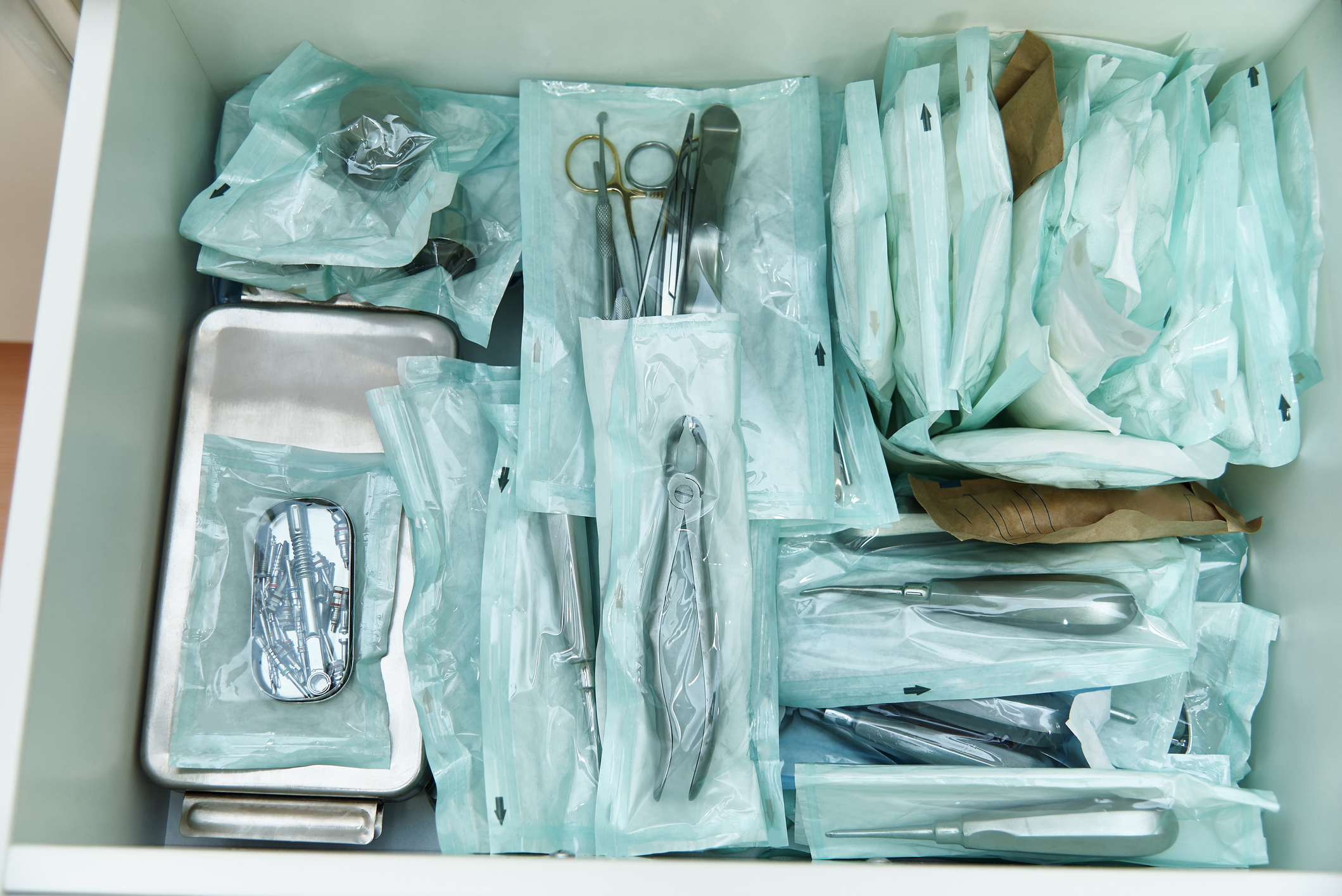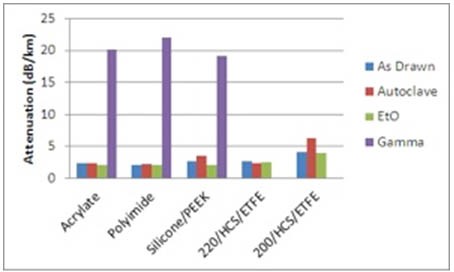
Choosing the Right Medical Grade Fiber Optic Cable Part 1: Sterilization
Sterilization methods can have a significant impact on the performance of fiber optic cables. How can you be certain that the sterilization method you choose won’t adversely impact the performance of your carefully designed medical device? How do you balance performance requirements of the fiber with the effects of packaging and sterilization? Timbercon can help – our engineers have decades of experience designing for high consequence environments and we are fiber agnostic. Since we don’t draw fiber optic cable we will choose the best fiber optic cable for your application, regardless of the source. And our zero-defect manufacturing process ensures that the cable is right the first time, every time.
Sterilization techniques can have significant impacts on the appearance, performance and strength of medical-grade fiber optic cables. Ethylene Oxide (ETO) has long been the most common method for sterilization of medical-grade fiber optic cables due to the minimal impact on the fiber itself, and its ability to penetrate even small crevices. However, recent leaks from several prominent ETO sterilization plants have led to increasing concerns about the safe use of ETO. Emissions regulations for ETO are now being put in place, which promises to increase the cost and decrease availability of ETO sterilization. There are also increasing calls to utilize sterilization techniques which can have lower toxicity and environmental impact.

But are other methods of sterilization safe for your fiber optic cable? That depends on both the type of fiber optic cable being sterilized, the sterilization technique and even the jacket material which protects the cable. Plastic Optical Fiber (POF) typically refers to fiber with a PMMA (methyl methacrylate, or acrylic) core and cladding from a silicone resin. POF is often used in medical applications due to its low cost, high numerical aperture and high mechanical flexibility. Unfortunately, sterilization of this fiber type can be challenging when using techniques other than ETO. E-Beam sterilization is gaining in popularity; unfortunately, E-Beam and Gamma sterilization of POF leads to significant darkening of the fiber – altering the color and attenuating signal. While some data on the effects of sterilization on plastics is readily available, data on plastic optical fiber per se is largely anecdotal. The same is true for Borosilicate fibers, which are also commonly used in endoscopy. In general, ETO will still be the preferred method for sterilizing medical devices including these types of fibers. Autoclaving generally results in unacceptable results, but radiation-based methods need further study, and may be acceptable under some circumstances.
By contrast, the effects of sterilization on pure silica core fiber optic cables have been well characterized. OFS (Optical Fiber Solutions), in particular, has published extensive data on the effects of sterilization on various fiber optic cables with various jacketing compounds. Radiation-based sterilization techniques (Gamma in this study) were shown to affect the strength of the fibers analyzed. Perhaps more significantly, gamma sterilization also adversely impacts the transmission light through the fiber optic cables.

Choosing the correct type of fiber optic cable for your medical device always involves tradeoffs between preferred sterilization technique, mechanical strength, light/power transmission and cost. Timbercon’s years of experience in choosing the right fiber optic cables and optical engineering expertise can work for you. Contact us today if you need assistance in selecting the best fiber optic cable for your design or for a free design evaluation to see if we can help improve performance or cost.
